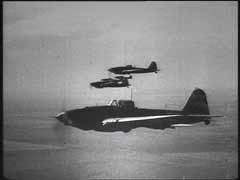
Film
Browse an alphabetical list of film clips that feature important events before, during, and after the Holocaust and World War II. These clips include home movies, propaganda films, newsreels, and more.
<< Previous | Displaying results 141-150 of 191 for "Film" | Next >>
-
Romani (Gypsy) campsite in Slovenia
FilmGermany and its Axis allies invaded Yugoslavia in April 1941. The Germans probably shot this film after they occupied southern Slovenia following the Italian armistice in 1943. The film was found in the Ustasa (Croatian fascist) archives after World War II and shows the dismal living conditions that Roma (Gypsies) endured in occupied northern Yugoslavia.

-
Romani (Gypsy) campsite near Berlin
FilmThis film excerpt from Groß-Stadt Zigeuner (1932) by filmmaker László Moholy-Nagy shows a Romani (Gypsy) campsite near Berlin, Germany, in the last year of the Weimar Republic. Although Roma (Gypsies) had faced persecution in Germany even before the Nazi rise to power in 1933, the Nazis regarded them as racial enemies to be identified and killed. Tens of thousands of Roma were killed by the Einsatzgruppen in eastern Europe or were deported to killing centers in occupied Poland.
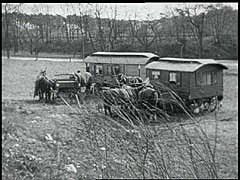
-
Romani (Gypsy) children used in racial studies
FilmEva Justin was an assistant to Dr. Robert Ritter, the Third Reich's "expert" on Roma (Gypsies). She studied these Romani (Gypsy) children as part of her dissertation on the racial characteristics of Roma. The children stayed at St. Josefspflege, a Catholic children's home in Mulfingen, Germany. Justin completed her study shortly after this film was taken. The children were deported to Auschwitz-Birkenau, where most were killed.
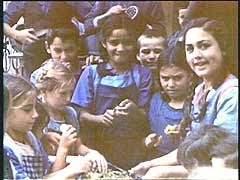
-
Roosevelt announces aid for Britain
FilmAlthough constrained by powerful isolationist sentiment in the United States, President Roosevelt was determined to help democratic Great Britain continue the war against Nazi Germany. Even as he promised to keep the United States neutral in the European war, Roosevelt ordered the expansion of military construction and pledged--as shown in this footage--that the United States would serve as the "great arsenal of democracy." In March 1941, Congress approved Lend-Lease aid for Britain. Britain ultimately…
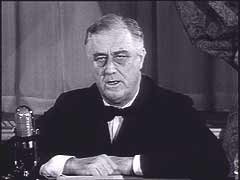
-
Scenes from the liberation of Buchenwald
FilmThe Buchenwald camp was one of the largest concentration camps. The Nazis built it in 1937 in a wooded area northwest of Weimar in central Germany. US forces liberated the Buchenwald camp on April 11, 1945. When US troops entered the camp, they found more than 20,000 prisoners. This footage shows scenes that US cameramen filmed in the camp, survivors, and the arrival of Red Cross trucks.
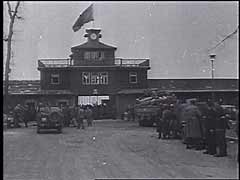
-
School lesson in Munkács
FilmChildren from the cheder (traditional religious school) in Munkacs recite their lesson.

-
Screening of concentration camp film footage
FilmUS prosecutor Thomas Dodd introduces the film compilation "Nazi Concentration Camps." At the end of the courtroom scene shown here, the lights are dimmed for the screening. The footage, filmed as Allied troops liberated the concentration camps, was presented in the courtroom on November 29, 1945, and entered as evidence in the trial.
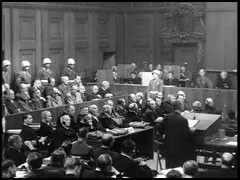
-

-
Some Were Neighbors
FilmHow was the Holocaust possible? The central role of Hitler and other Nazi Party leaders is indisputable. Less well understood is these perpetrators’ dependence on countless others. In countries across Europe, tens of thousands of ordinary people actively collaborated with German perpetrators of the Holocaust. Many more supported or tolerated the crimes. The special exhibition Some Were Neighbors: Collaboration & Complicity in the Holocaust was underwritten in part by grants from The David Berg…
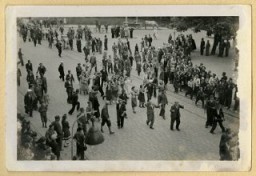
-
Soviet military advance in Vitebsk
FilmThe Germans invaded the Soviet Union in June 1941 (Operation "Barbarossa"). German forces occupied Vitebsk in the northeastern region of Belorussia on July 11. Soviet forces seized the initiative from the Germans after the battle of Stalingrad in late 1942 and early 1943. The Soviet army liberated Vitebsk on June 26, 1944, during their summer 1944 offensive. This footage shows military units involved in the fighting and German soldiers captured during the campaign. By the end of the summer, the Soviet…
